How to Install Curtain Rods
by Robert Fox
Just when you thought you could enjoy your weekend, you realize that it is precisely this weekend that you planned to buy and install curtains. No need to worry, this is easy to do and does not take as much time as you thought. We will show you how to hang what you need to hang, and how to make everything go smoothly.
Besides giving a better look to your room, having a curtain will also prevent possible intruders from seeing what's inside your home. Another good point to mention when speaking about windows and home security is learning how to burglar proof your windows.
Nevertheless, here's a step-by-step guide to choosing and hanging curtains.
6 Steps to Install Curtain Rods
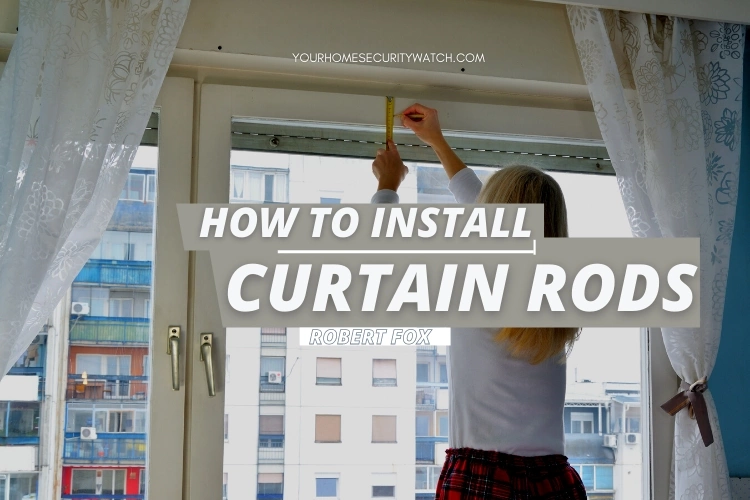
1. Buy Your Curtains
The curtains are usually made of thick pleated fabric, which requires the use of traverse rods. To hang them, you will need to place drapery pins in the pleat, before hanging them on the rod. A cord will allow you to open and close the curtains.
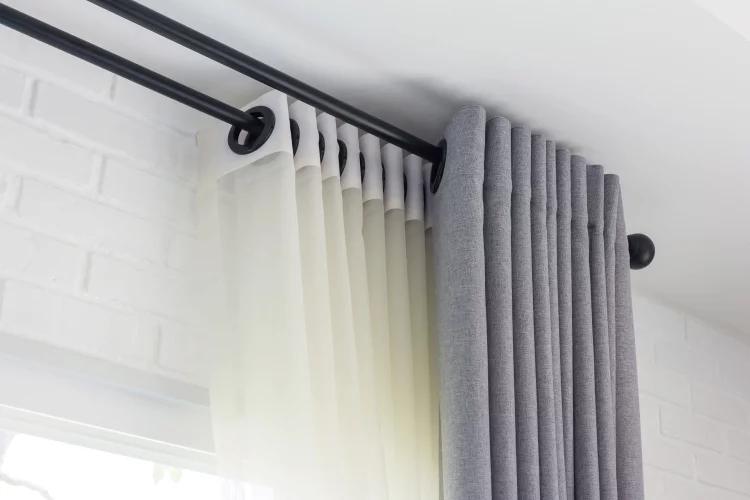
Panel, eyelet and tab curtains are designed to be hung directly on a round rod. They might have a pocket along the top of the curtain, to pass the rod, unless it must pass through the eyelets or tabs which are provided with the curtain. The bottom of this type of curtain may be above or below the window sill, at ground level or even beyond it - this is called the pudding.
The "cafe" curtains cover only the lower half of a window, to allow light to penetrate while ensuring a minimum of privacy. They are often found on kitchen windows, usually hung on thin rods, made of cables stretched between the two sides of the window frame.
The door panels have two pockets: one at the top of the curtain and the other at the bottom. This kind of curtains, therefore, requires two rods that you install on a door, or you simply fix with magnets. Door panels are frequently used on glass doors and side windows.
2. Decide the Length of Your Curtains
When buying curtains, don't forget that their length must be able to cover the entire window (unless it is "coffee" curtains). If you choose tab top curtains, make sure that the length of the curtain does not take into account the length of the tabs.
If you want to have curtains that fall to the ground, make sure they stop at the height of 1.25 cm (1/2 inch), unless you live in a humid environment. In this case, they should stop at 2.5 cm (1 inch) from the ground as they may become longer during wet days.
If you plan to install pudding curtains, just make sure that the length of the curtains is longer than the wall on which you are going to install them.
If you want to have curtains that stop under the bottom edge of the window, calculate their length so that they stop 10 cm (4 inches) below the edge of the frame of this window.
Sill-length curtains stop at the level of the window sill.
3. Decide How Far You Want to Pull Your Curtains from the Window
If you wish to be able to pull them completely out of the frame of the window, buy a longer rod or a rod with elbows. These elbows are oriented 90 degrees at each end of the rod and allow you to push the curtains outside the window frame, that is to say fully against the wall. The length of these elbows or rods will depend on the type and width of the curtains.
4. Choose to Install the Rods Either on the Frame of the Window or on the Wall Where This Window Is Located
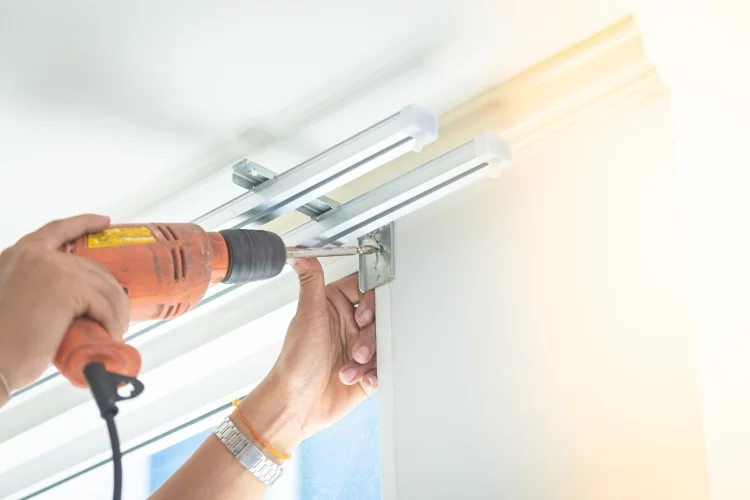
Keep in mind that the curtains can be drawn only to the location of the brackets that will maintain the rod, whether it has elbows or not. The type of your curtain will also determine how much it can be compressed. The place it will take when compressed is called stack back.
It's up to you to choose if you want curtains that cover part of the window when they are open or if you prefer to reveal the window fully, to let in as much light as possible.
5. The Height of the Rod
Use a measuring tape. Determine the distance between where the top of your curtains will be from where they will end: at the window sill, below or at ground level. Keep in mind that some types of curtains have pleats or ruffles that will protrude above and hide the rod. Do not take this section into account when measuring. For convenience, mark the top and bottom of the curtain on the window frame or on the wall with a pencil.
6. Install the Brackets on the Wall or on the Window Frame
The rod should be at a correct height, as expected in your measurements. When you think you are in the right position, use a small nail to hold the brackets in place. Then place the rod on the brackets and use a level to make sure it is horizontal.
If you fix the brackets under the window, be careful not to place them too close to the edge, so as not to crack the wood.
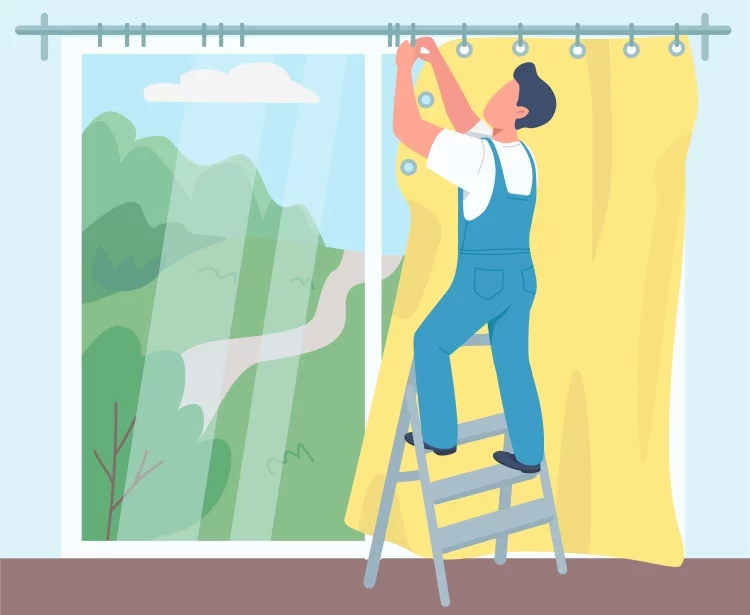
If you opt for tab top curtains, it is better to choose a pretty thin rod. A thick rod would shorten the length of the curtains by making them hang too high.
Take into account the length of the rod when fixing the brackets. You may want decorative rods decorated with florets at each end, beyond the brackets. On the other hand, although most curtain rods are adjustable, try to avoid placing the brackets too far from each other, so that the rod does not sag in the middle. As a general rule, avoid increasing the length of the rod by more than 50 percent of the length needed.
Mark the location of the brackets once you are sure of your measurements. Use a pencil to note where the screws will go.
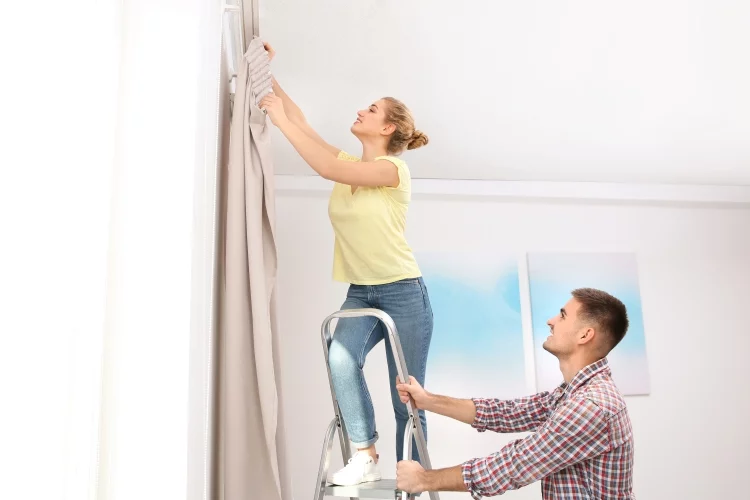
Drill pilot holes to facilitate screw fixing. This will prevent the screws from damaging the window frame. If you are installing the brackets into the wall, make sure that the pilot holes are large enough to accommodate wall plugs.
Screw the brackets to the window frame or wall. If you fix them on the wall, you will need plastic screw anchors, which will expand inside the wall panel. In this way, the weight of the rod and curtains will not pull them out of the wall. Hang the curtain on the rod and place the rod on the brackets.
Advice
- Do not rush to replace the brackets of your rod if you realize that your curtain is too short. Let the curtain hang for a day or two, to see if it does not relax a little. On the other hand, you can iron your curtains before hanging them, that is if you are sure that the fabric will withstand such a temperature.
- If you don't have a level, there is an app online so you can download it for free.
- Be careful that your curtains never cover a radiator or a heat register. Also, make sure you don't fix them too close to the ceiling that it would be difficult to open and close them.
More from my site
 |
 |
 |
 |

About Robert Fox
Rob Fox is a former hydro worker who used to teach self defence in Miami for 10 years. He's currently enjoying his retirement, playing cribbage and golf with his buddies, locksmithing and home security in his spare time. Rob is an avid reader, and has even written a few books on the subject of self defence.
Thoughts on "How to Install Curtain Rods"
 |
 |
 |
 |
Check These Out
You can Get FREE Gifts. Furthermore, Free Items here. Disable Ad Blocker to receive them all.
Once done, hit anything below
 |
 |
 |
 |